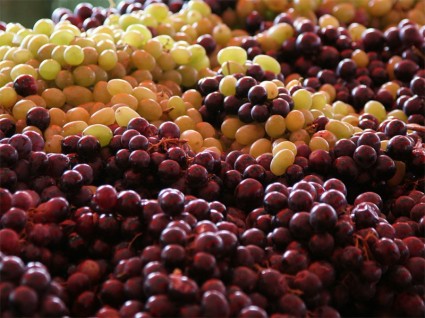Sometimes we forget that white wines are not necessarily made from white grapes.
Because the pigment is in the skin of the grape and not the pulp, white wines do not retain much color.
The grapes are generally pressed and skins are removed early in production, resulting in a light color, even if red grapes are used.
Champagne is a good example of this process. The famous bubbly is most often made from pinot noir (as red of a grape as they come), chardonnay and pinot meunier. Another example is Gewurztraminer, a grape that when you see it hanging on the vine is an awkward reddish gray color. One would never think this oddly colored grape would produce the beautiful golden color we see in the glass.
When a grape is pressed rather than crushed (like most red wines), the tannin from the skin is not released into the juice. This step in white wine making has the most impact, and unfortunately there are many aromatic substances we lose without the skin contact.
Lucky for us, there are a few grape varieties that hold many of the aromatic qualities in the pulp; Riesling and Gewurztraminer are among them, along with muscats. If you have ever focused on the smell of those wines, it’s easy to describe the glass as filled with layers of aromas. Chardonnay, pinot grigio and sauvignon blanc are generally less aromatic because their pulps are less intensely flavored.
These are a few wines showcasing the intense range of the aromatic complexity we can savor in white wines.
THE VALUES
- 2014 Meli Riesling, Chile (about $13 retail)
- 2014 Twisted River Riesling, Germany (about $12 retail)
THE SPLURGES
- 2014 Hugel Alsace Gewurztraminer, France (about $28 retail)
- 2014 Trimbach Gewurztraminer, France (about $28 retail)
